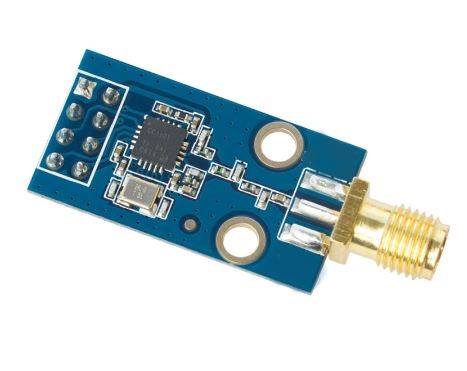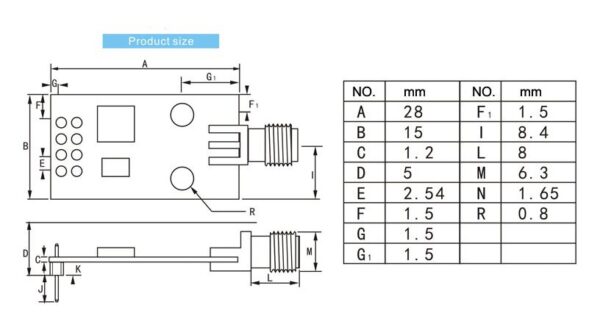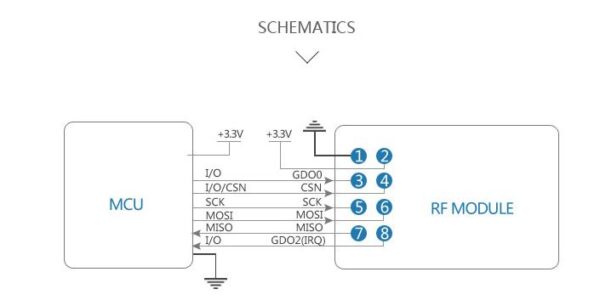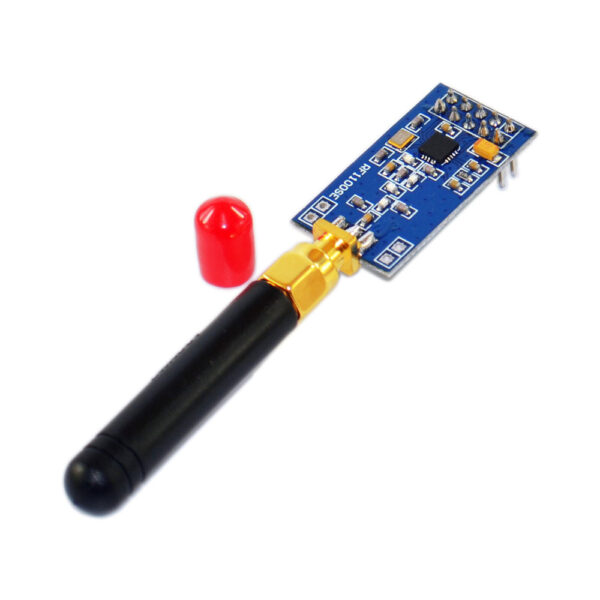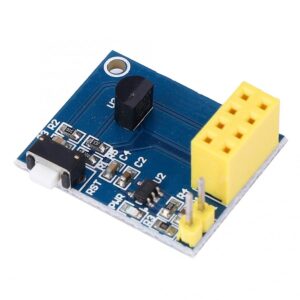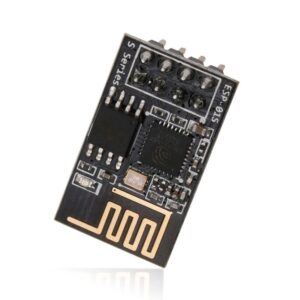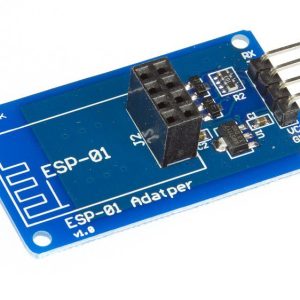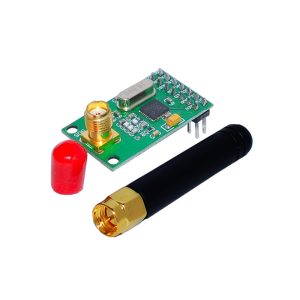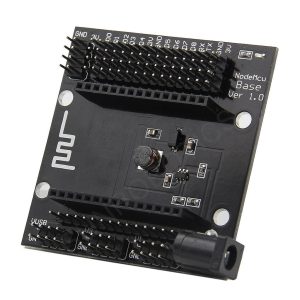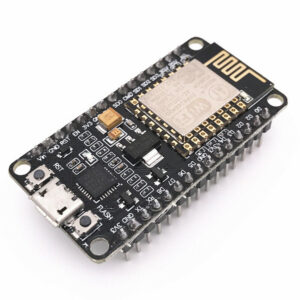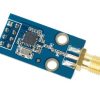CC1101 433MHz Wireless RF module
Offers exceptional reliability and transmission distance while keeping power consumption low. Perfect for Arduino and other IoT projects requiring a large transmission distance
13 in stock
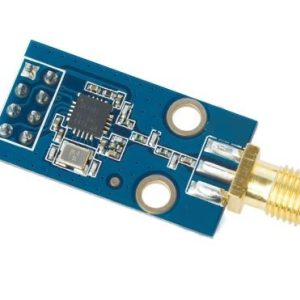
13 in stock
CC1101 433MHz Wireless RF modules is a 10mW Wireless transceiver integrated data transmission module with high stability, strong diffraction performance, and excellent, thorough ability working on 433MHz.
The module has enough transmission power, good spectral characteristics,
Specifications:
- RF chip CC1101
- Module size 28*15 mm (Not including antenna)
- Module weight 3.15g, Including antenna
- Operate Frequency 400M~470MHz (Can be adjusted by software; 433 Mhz ± 10MHz is recommended)
- Supply voltage 1.8 ~ 3.6V DC (voltage higher than 3.6V will damage the module permanently)
- Communication level 0.7VCC ~ 3.6V (VCC refers to the module supply voltage)
- Measured distance 700m )Clear and open, maximum power, height 1.5m, 1k airspeed)
- Sending power Maximum 10dBm About 10mW
- Air rate 0.6k ~ 500Kbps (adjustable by Software, it is recommended to use low-speed as far as possible)
- Turn off current 0.5uA (In power down mode)
- Sending current 29mA@10dBm (Power supply must be more than 100mA)
- Receiving current 16mA (In the receiving state)
- Communication Interface SPI (The maximum rate is up to 10Mbps)
- Transmitting length Single packet 1 to 64 bytes
- Receiving length Single packet 1 to 64 bytes
- RSSI support (See chip manual for detail)
- Antenna interface SMA-K 50Ω impedance
- Operation temperature -40 ~ +85℃
- Operation humidity 10%-90%
- Receiving sensitivity -116dBm @ 0.6kbps (See the chip manual for details)
Package Included: 1 x CC1101 Wireless Module SMA Antenna
Check out our On Sale and Clearance Items
Development Resources: Demo Codes, Schematics, Datasheets, Etc
![]() Hackaday serves up Fresh Hacks Every Day from around the Internet.
Hackaday serves up Fresh Hacks Every Day from around the Internet.
![]() Instructables is a community for people who like to make things. Explore, share, and do your next project with us!
Instructables is a community for people who like to make things. Explore, share, and do your next project with us!
![]() Where the world builds software
Where the world builds software
 Raspberry Pi Foundation What would you like to make today?
Raspberry Pi Foundation What would you like to make today?
![]() Arduino‘s mission is to enable anyone to enhance their lives through accessible electronics and digital technologies.
Arduino‘s mission is to enable anyone to enhance their lives through accessible electronics and digital technologies.
![]() Wikipedia is a free online encyclopedia created and edited by volunteers worldwide and hosted by the Wikimedia Foundation.
Wikipedia is a free online encyclopedia created and edited by volunteers worldwide and hosted by the Wikimedia Foundation.
Notes:
1. There may be slight size deviations due to manual measurement, different measuring methods and tools.
2. The picture may not reflect the actual colour of the item because of different photographing lights, angles and display monitors.
| Weight | 0.010 kg |
|---|---|
| Dimensions | 6 × 5 × 1 cm |
Product Applications
Q & A
The CC1101 is a popular 433 MHz wireless RF module used for low-power, low-data-rate communication in various wireless applications. It utilizes SPI (Serial Peripheral Interface) for communication with a microcontroller.
SPI Pins on the CC1101
For the CC1101 module, the relevant SPI pins are:
MISO (Master In Slave Out): Used by the master to receive data from the slave (CC1101).
MOSI (Master Out Slave In): Used by the master to send data to the slave.
SCK (Serial Clock): Provides the clock signal for synchronizing data transmission.
CSn (Chip Select, sometimes also called SS for Slave Select): Used to select the CC1101 for communication.
GOD1 Pin
The pin labeled GOD1 is specific to certain modules or microcontrollers, and its function can vary depending on the hardware. In the context of the CC1101 module, GOD1 is not a standard label for any of the typical SPI pins (MISO, MOSI, SCK, or CSn).
Identifying MISO on CC1101
To determine if GOD1 is equivalent to MISO, you should:
Consult the Documentation: Check the datasheet or the pinout diagram of the CC1101 module. The datasheet will provide a clear mapping of pin functions.
Pin Labeling: On the CC1101 module, the pin functions are usually labeled on the module itself or in the schematic provided by the manufacturer. Look for a pin labeled as MISO.
Pinout Diagram: The CC1101 datasheet typically includes a pinout diagram showing the functions of each pin. MISO will be explicitly labeled in this diagram.
CC1101 Typical Pinout
For the CC1101 module, the standard pin functions are:
MISO: This pin is used for Master In Slave Out communication.
MOSI: This pin is used for Master Out Slave In communication.
SCK: This pin is used for the Serial Clock signal.
CSn: This pin is used for Chip Select (active low).
Summary
To determine if GOD1 serves as MISO for the CC1101 module:
Review the Pinout Documentation: Check the CC1101 datasheet or user manual to identify the function of each pin. Look specifically for the MISO pin.
Compare Labels: Compare the pin labeled GOD1 with the standard SPI pin functions. If GOD1 is marked as MISO in the documentation, then it performs the MISO function.
Without specific documentation indicating that GOD1 is indeed the MISO pin, you cannot assume it does the same thing as MISO. Always refer to the hardware documentation for accurate pin function information.

